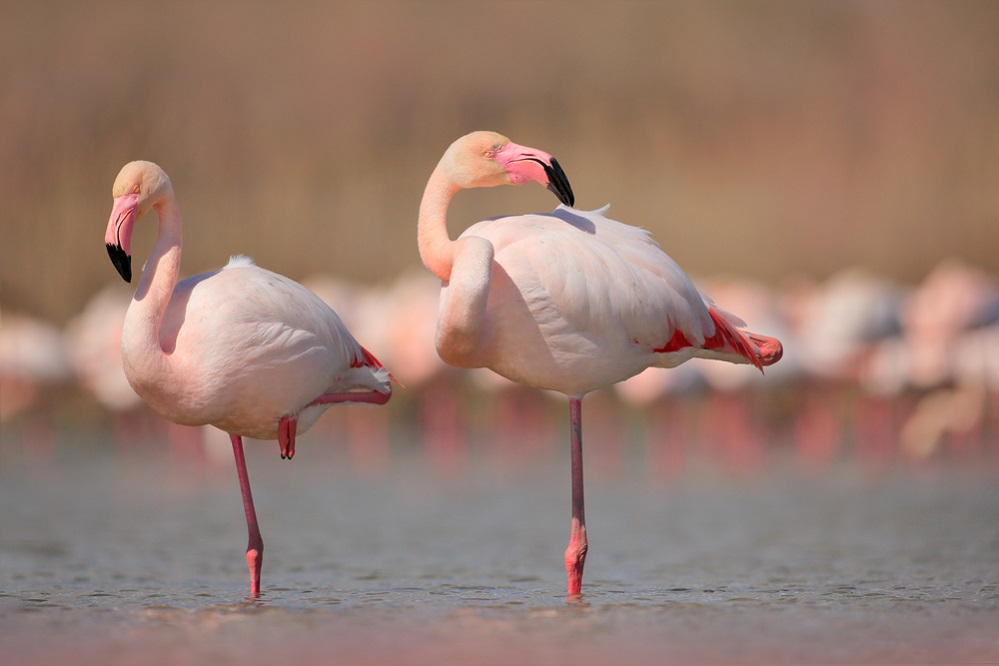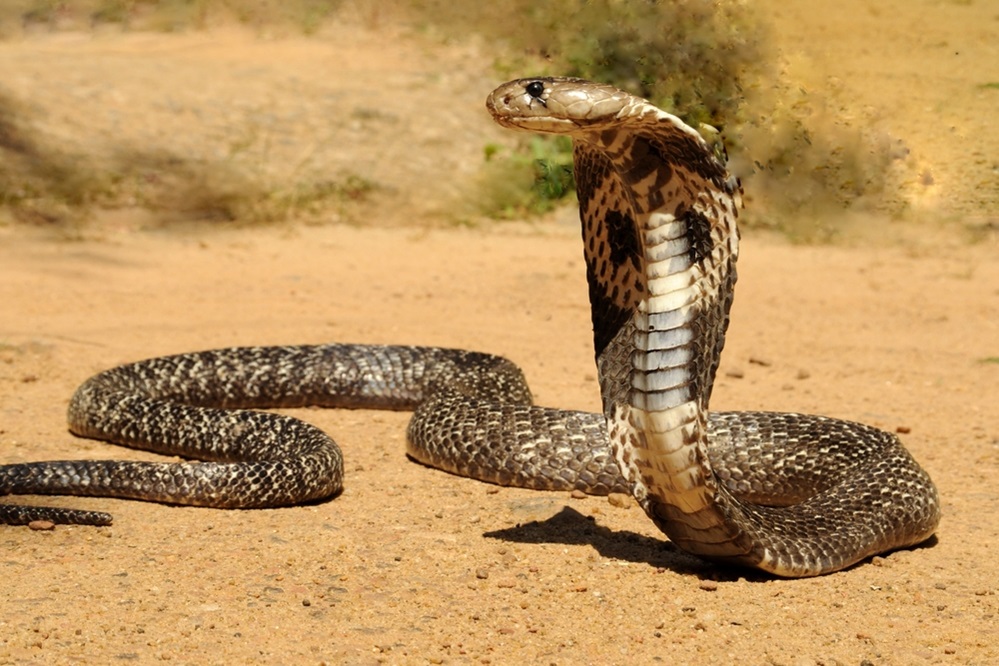Flamingos are famous for their bright pink feathers, tall legs, and funny-looking beaks. They live in warm, watery places all over the world. These amazing birds might look delicate, but they are actually built to survive in tough environments!
Their pink color comes from what they eat, and they thrive in the special wetlands they call home. Sadly, humans sometimes damage these important places, so we need to protect flamingos and their habitats.
Let’s dive in and learn more about these fascinating birds! Did you know that flamingos are social creatures and can live for decades? Their unique adaptations and behaviors make them a true marvel of the natural world!
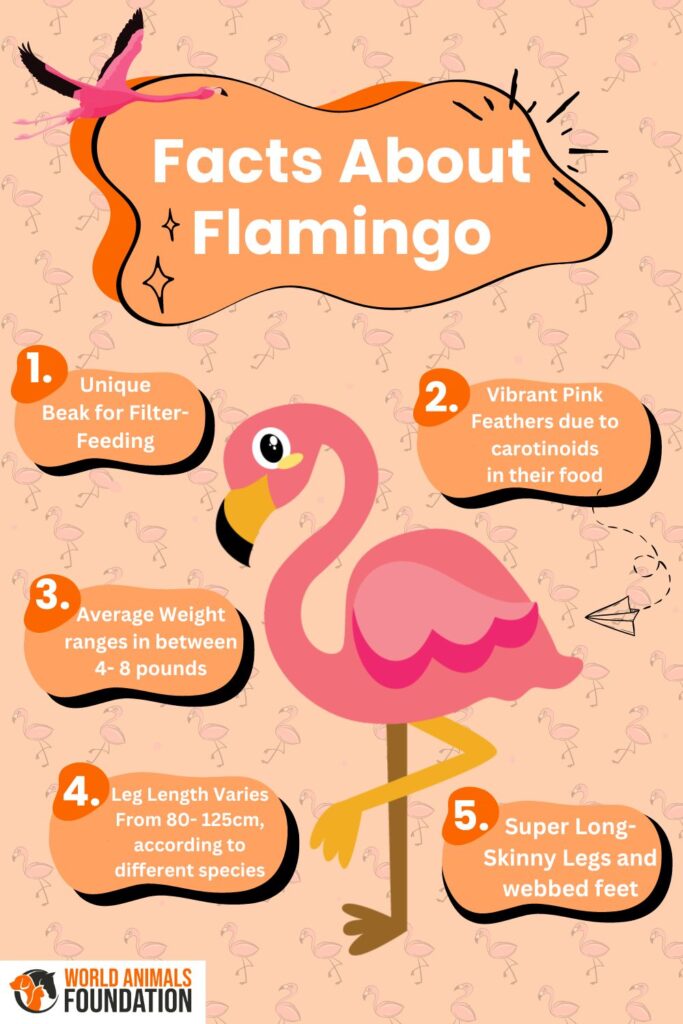
Anatomy and Adaptations
Flamingos have some amazing body parts that help them live in shallow water. Each part, from their legs to their beaks, has a special job to do! Let’s explore detailed information about flamingo anatomy:
Long Legs and Webbed Feet
Flamingos are known for their super long, skinny legs that are perfect for wading through lagoons, muddy areas, and even shallow saltwater. Their webbed feet are like built-in snowshoes, helping them walk on soft ground without sinking. They’re surprisingly good swimmers when they need to be, too, using their feet to paddle and steer.
The Special Beak
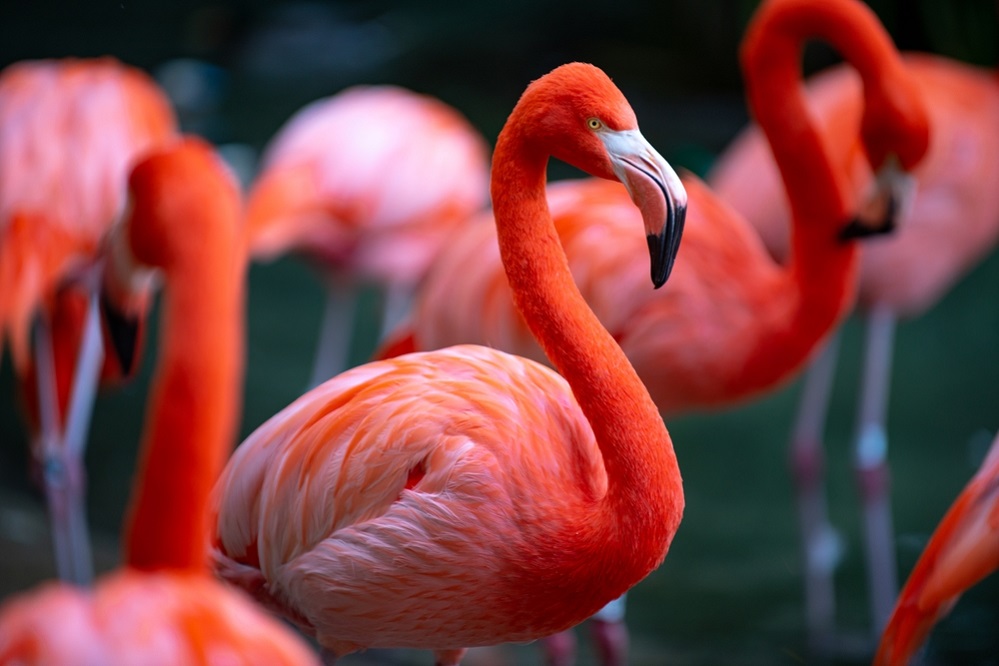
A flamingo’s beak looks really strange because it’s upside down! This unique design is for something called filter-feeding. Imagine their beak as a strainer with tiny bristles called lamellae inside.
To eat, they scoop up water and mud. Then, using their fleshy tongue as a pump, they force the water out, while the lamellae trap tiny creatures like shrimp, algae, and tiny insects. It’s a very efficient way to eat in their watery world!
The Bright Pink Feathers
The most amazing thing about flamingos is their bright pink feathers (though some can be orange or red)! The color comes from special pigments called carotenoids found in their food. Eating all that shrimp and algae is like eating built-in dye!
A really bright flamingo is a healthy flamingo, making them attractive to mates. Interestingly, when flamingos are stressed or not getting enough food, their colors start to fade.
Species and Diversity
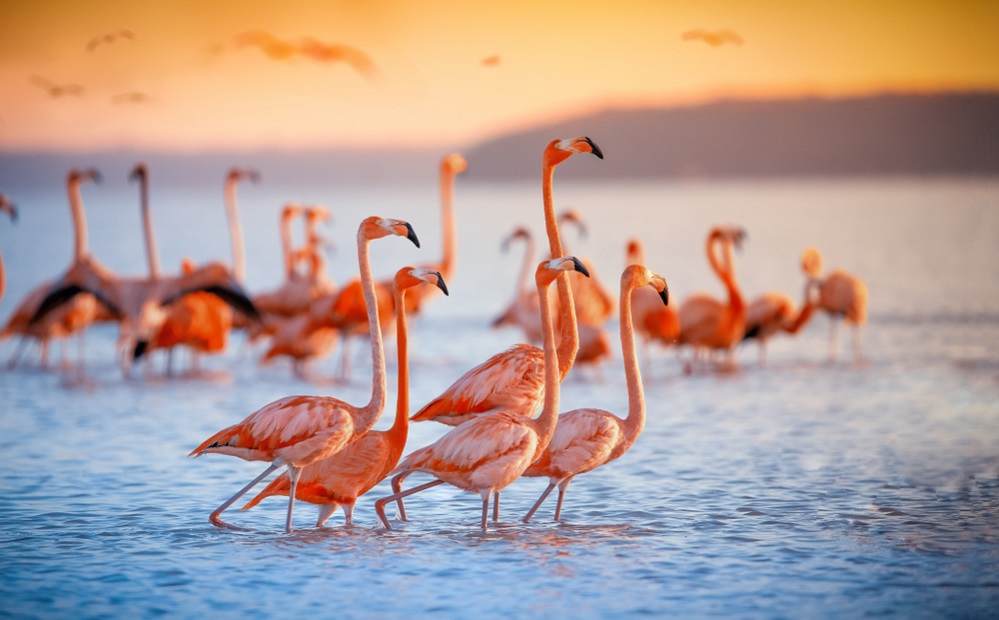
Most people picture one kind of flamingo, but there are actually six different species! They all look a little different, and they live in various parts of the world.
The Six Flamingo Species
Lesser Flamingo: These are the smallest flamingos, and there are more of them than any other kind. They live in Africa and some parts of Asia, often in enormous colonies around highly salty lakes.
Greater Flamingo: This is the most widespread flamingo, with a range across Africa, southern Europe, the Middle East, and even India! They’re the tallest flamingo species.
Chilean Flamingo: Found all over South America, these flamingos have paler pink feathers and gray legs. They live in a variety of wetland habitats.
James’s Flamingo: Also known as the Puna flamingo, these flamingos are mountain specialists living high up in the Andes Mountains of South America. They have bright yellow legs and a black spot on their beaks.
Andean Flamingo: Another Andes mountain dweller, you can tell these flamingos apart by their yellow legs and feet and their beaks, which are mostly black.
American Flamingo: These Caribbean flamingos have the brightest, most colorful feathers of all! They’re known for their deep reddish-pink plumage.
Where They Live
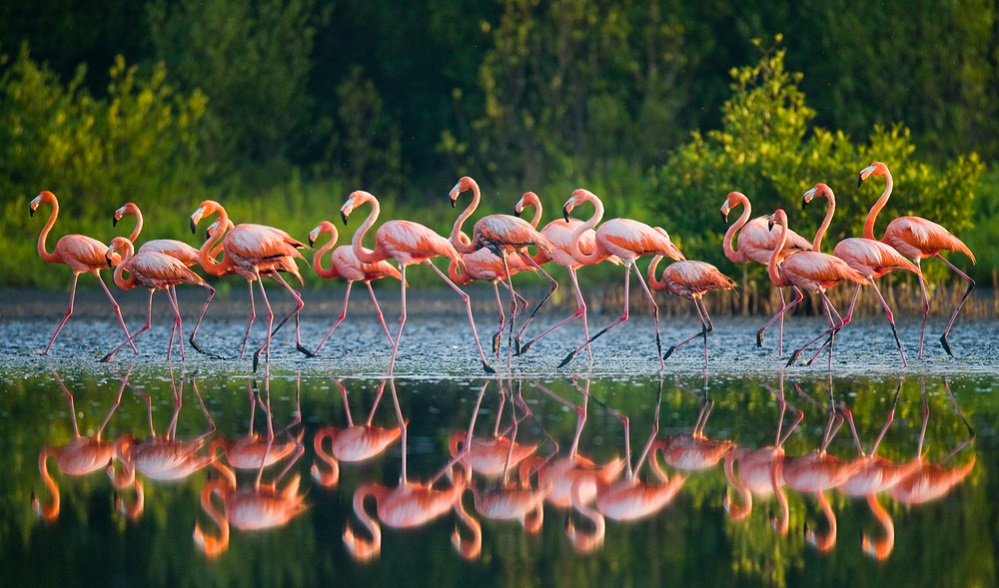
Flamingos love warm places with shallow water, no matter which continent they’re on (except for Australia and Antarctica). They hang out in lagoons near the ocean, salty lakes, and even big mudflats. The important thing is that they can find food, enough space to build nests in their large colonies, and feel safe from predators!
Behavior and Social Lives
Flamingos are famous for hanging out in giant groups called colonies. Sometimes these can have thousands or even millions of birds! There are some really good reasons why they love being in a crowd.
Building Nests and Raising Chicks
Flamingo nesting areas are a sight to see! Thousands of pairs build nests that look like little mud volcanoes. Both parents help sit on the egg and even feed the fluffy gray chick when it hatches. Flamingo colonies are incredibly noisy and chaotic, but this organized chaos helps ensure the next generation!
Fierce Defenders of Their Nests
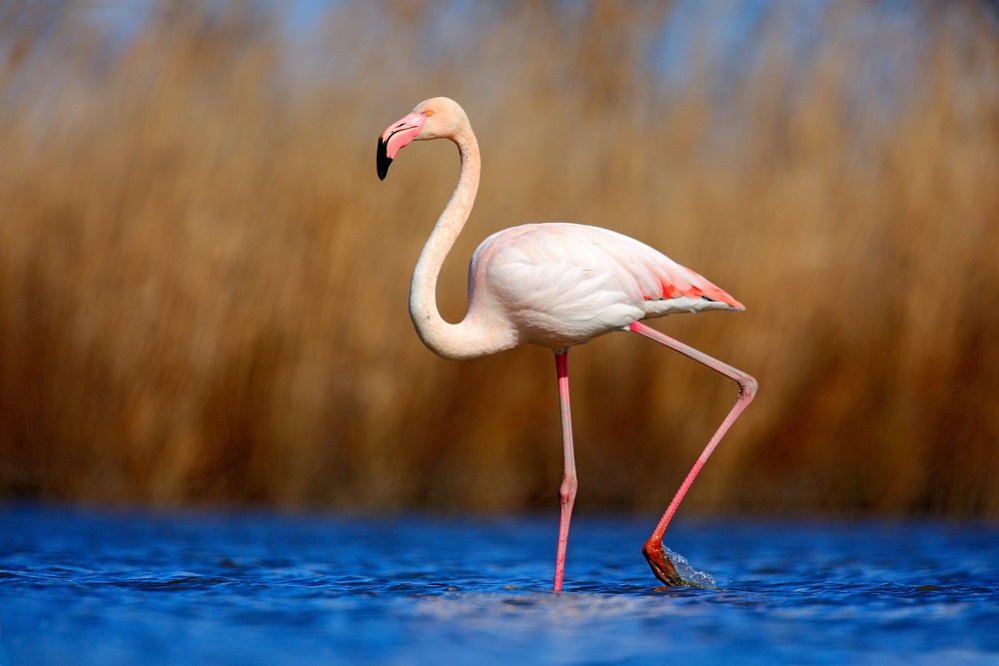
How do flamingos protect their nests?
While flamingos might seem like gentle giants, they become fiercely protective when it comes to their nests and young. Their safety-in-numbers approach, with large colonies of thousands of birds, makes it harder for predators to target a single nest. Plus, all those watchful eyes are better at spotting danger!
Their unique mud volcano-shaped nests provide elevation to protect the egg from flooding and keep it cooler under the hot sun. Both male and female flamingos share the duty of sitting on the nest, protecting the egg from predators, keeping it warm, and even turning it for proper development.
If a predator gets too close, adults might try a distraction display, pretending to be injured to lure the threat away. Flamingoes also use a mob mentality approach – a whole group might charge at a predator, honking and flapping to create a confusing scene to drive the threat away.
Easier Dinner Time
Flamingos eat by stirring up mud in the water. In a big group, even more food gets stirred up, so there’s plenty for everyone to share. Their loud honking calls while feeding might even be ways of communicating about the best spots to find food!
Finding Love: Flamingo Style
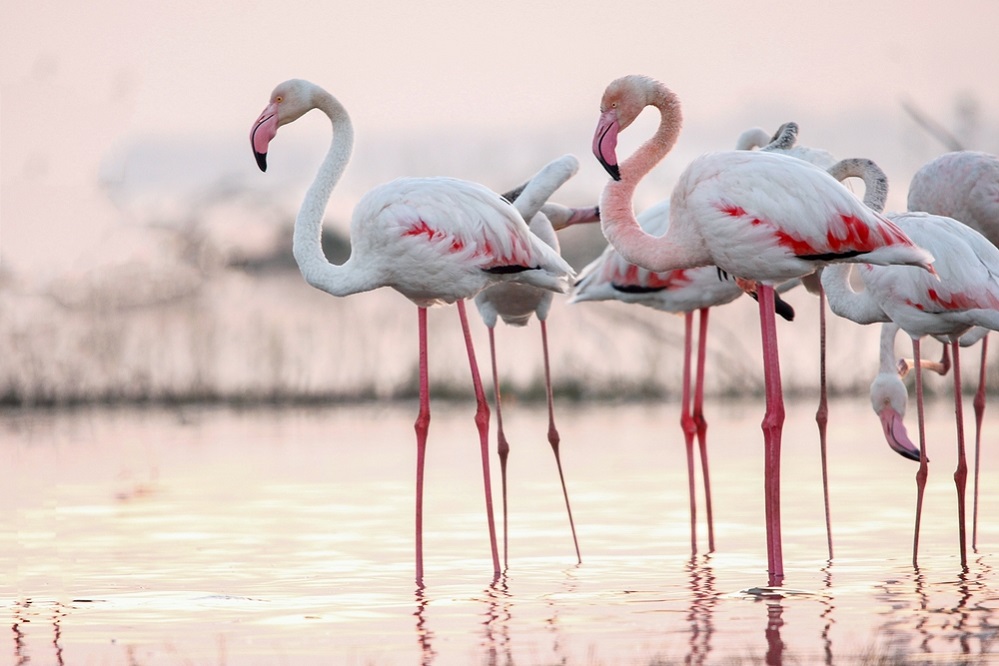
Ever wondered why do flamingos dance in groups? One of the coolest things flamingos do is a giant group dance to attract mates. They stretch their wings, bob their heads, and make loud noises all together. It’s really impressive to see and hear! Healthy flamingos with bright feathers are the best dancers and are more likely to find a partner.
Flamingos and the Environment
Flamingos aren’t just pretty to look at; they play essential roles in the places they live! Wetlands, the special watery areas flamingos need, are also super important for lots of other creatures and even for us humans! The role of flamingos in the ecosystem is worth noticing.
The Mud Stirrers
When flamingos walk around to find food, they stir up the mud at the bottom of their lagoons. It might seem small, but it’s a big deal! This helps bring oxygen into the water, keeping the water healthy, and promotes the growth of plants and tiny creatures that form the base of the food web.
The Wetland Detectives
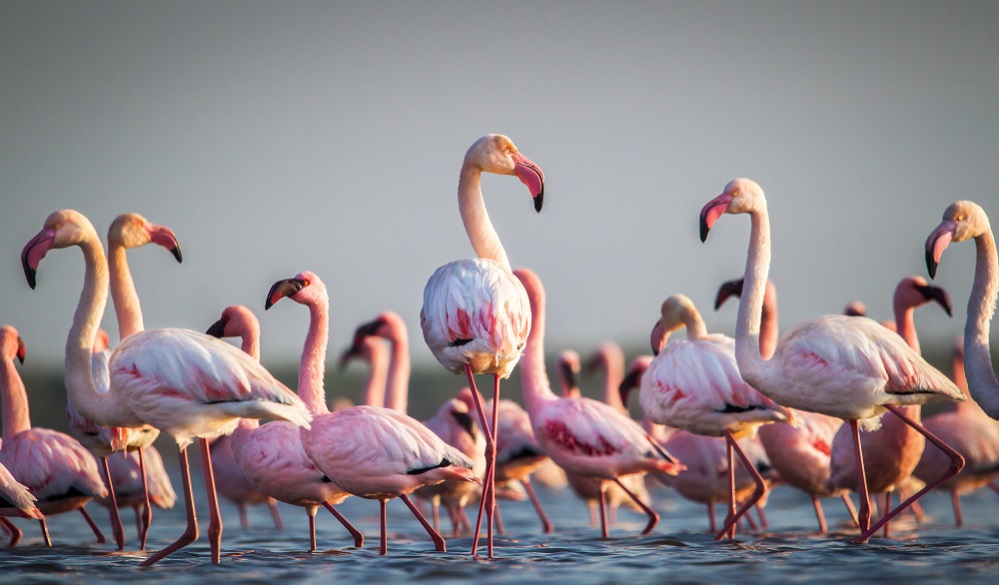
Why do flamingos live in wetlands?
Flamingos are very picky about where they live. They need clean water, specific water conditions, and plenty of food. If scientists see healthy flamingos, it means the wetland is healthy too! But, if the flamingos start disappearing, it’s a warning sign that something’s wrong in their special home. They are like living indicators of environmental change.
17 Interesting Facts About Flamingos
- Flamingos sometimes live near salty lakes that are almost boiling hot! They’ve adapted to drink this incredibly hot water.
- Sadly, ancient Romans thought flamingo tongues were super tasty, and they hunted these birds a lot.
- Some flamingo colonies are enormous! Lesser flamingos in Africa sometimes gather in groups of millions of birds.
- Flamingos are really old! Fossils show that birds just like them existed over 50 million years ago.
- A flamingo can filter about 4 gallons of water per minute – just imagine how many shrimp are in there!
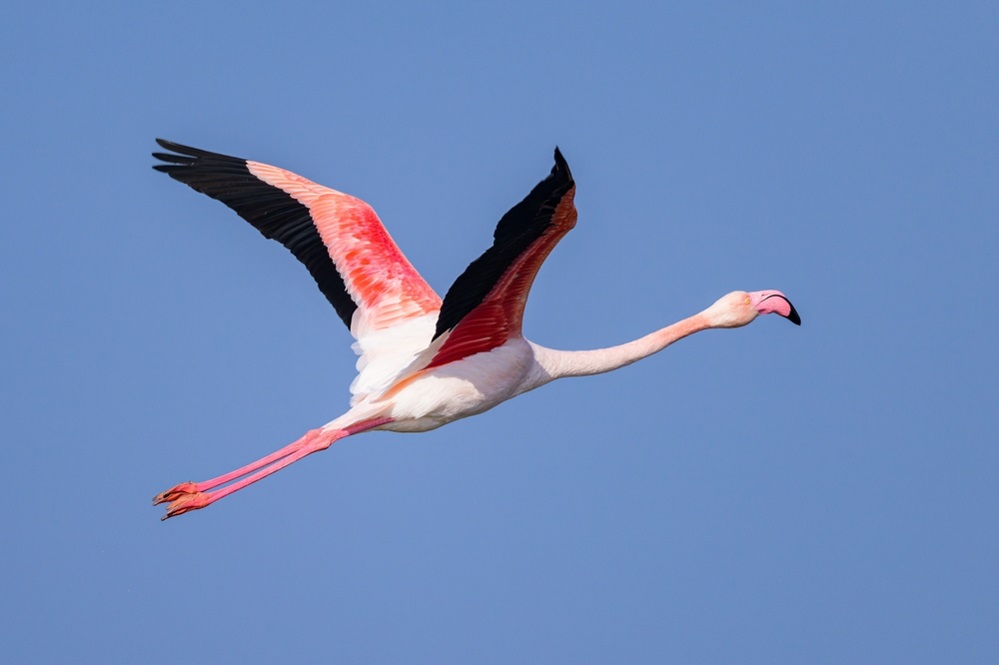
- The volcano-shaped flamingo nests can be up to a foot tall!
- The brighter a flamingo’s feathers, the healthier they are – it’s a big signal to potential mates!
- Flamingo eggs have a special coating that protects them from the hot sun and salty water.
- Flamingo chicks are fluffy and gray when born. They don’t get their pink feathers until they grow up.
- Flamingos can fly hundreds of miles in one go to find a new home or a good place to raise chicks.
- Both mom and dad flamingos produce a special kind of “crop milk” in their throats to feed their newly hatched babies. It’s even bright red!
- Flamingos often sleep standing on just one leg! Scientists think this might help them save energy and stay warm.
- Flamingos produce a special oil that they spread on their feathers, which helps protect them from the strong sun.
- Flamingos are noisy! They honk, grunt, and make other loud calls to communicate with each other.
- In some ancient cultures, flamingos were seen as symbols of the sun or of fire because of their bright colors.
- It might look funny, but standing on one leg might help flamingos regulate their temperature!
- When diving for food, a flamingo can hold its breath for several minutes!
Flamingos and Humans Relationship
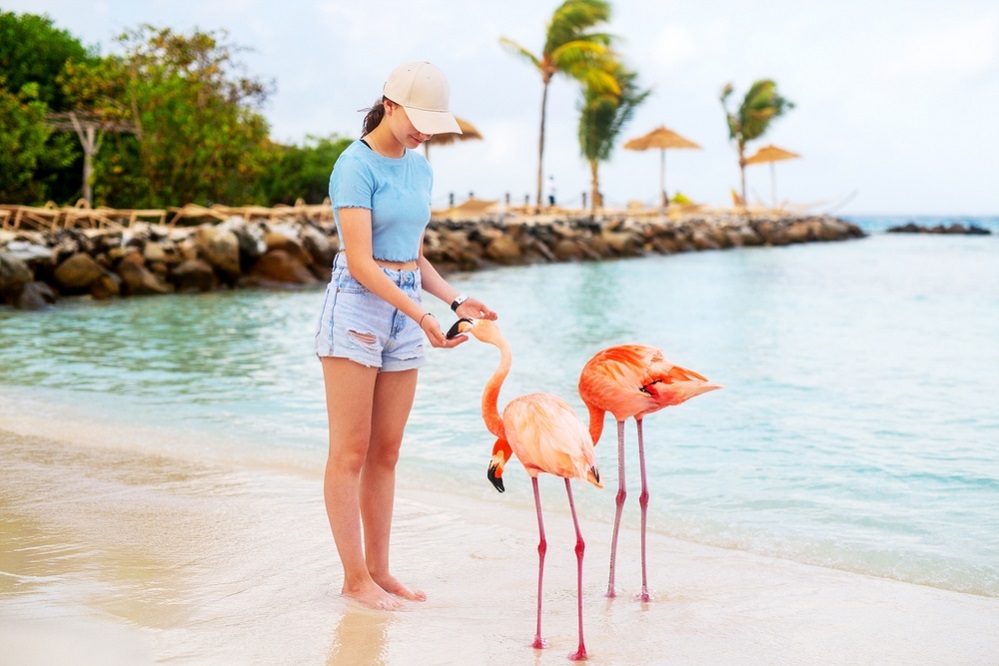
Flamingos are generally peaceful birds and don’t pose a threat to humans. In fact, in zoos or wildlife parks where they’re used to people, they might even take food right from your hand! Captive flamingos sometimes form strong bonds with their human keepers and can even learn simple commands.
However, it’s important to remember that wild flamingos are naturally cautious. While rarely aggressive, they might defend themselves if they feel threatened, so it’s best to admire these remarkable birds from a distance.
Challenges for Flamingos
While flamingos might seem plentiful because of their large flocks, some species are facing challenges. Not every flamingo is in immediate danger; organizations that monitor wildlife, like the IUCN, use special categories to show how at-risk a species is.
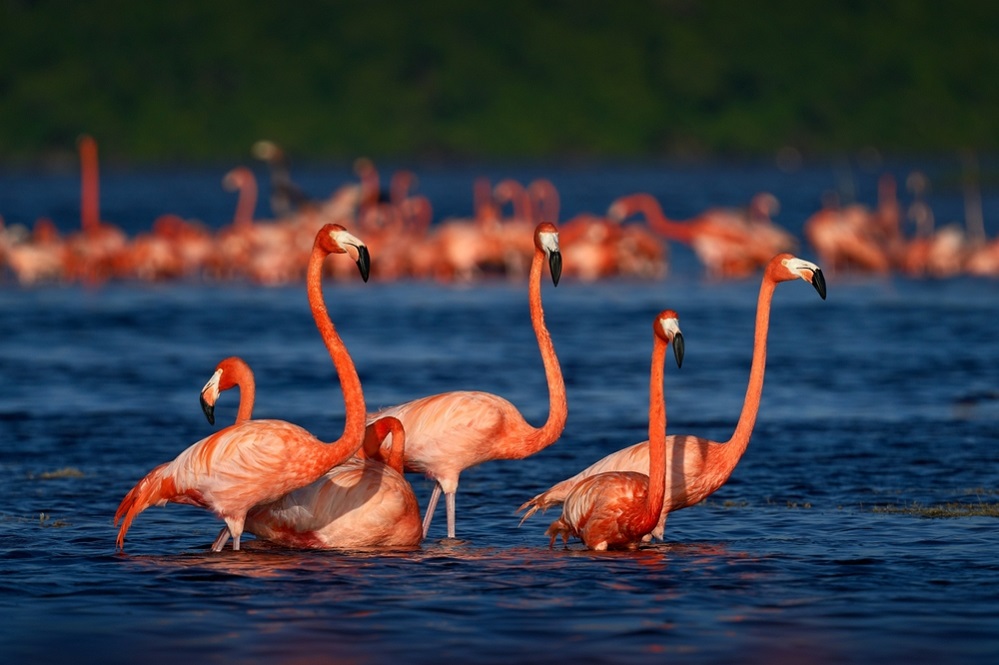
Several flamingos (Chilean, Puna, and Lesser) are classified as “near threatened,” meaning they could be in trouble in the future. The Andean flamingo is “vulnerable”, which is one step more serious, making it the rarest flamingo.
Flamingos face the loss of their special wetland homes because of factors like water being used for farms or cities, and pollution. Climate change, which can cause severe weather, is another threat. But it’s not all bad news! Many people care about flamingos.
For example, Chile protects a special lake where flamingos breed and wants to protect more areas like it. The Flamingo Specialist Group, formed in 1978, studies flamingos around the world and works with the IUCN to figure out the best ways to protect them.
So, how to help protect flamingos?
Everyone can help support flamingos! Here are ways you can make a difference: Learn more about wetlands and why they matter. Support groups that protect wetlands in your area. Be careful about the products you use – some can cause pollution that ends up in these special habitats.
Flamingos in Ancient Cuisine: A Dish of the Elite
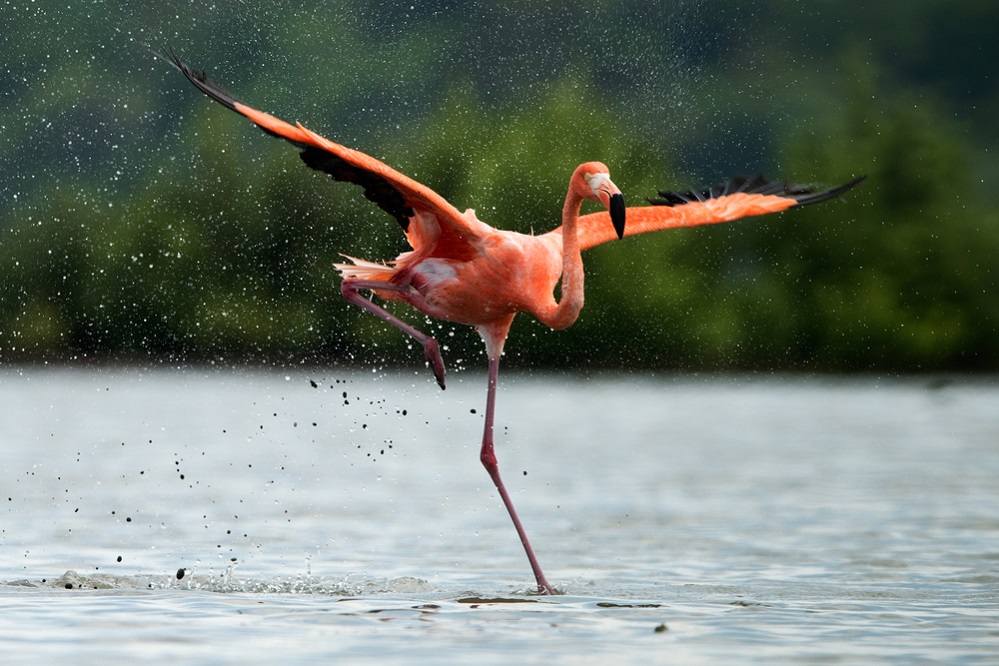
Today, we think of flamingos as beautiful, not as a delicious meal! But in ancient Rome, things were very different. So why were flamingos eaten in ancient Rome? Let’s dig a little bit into it!
Romans ate many types of birds, but flamingos were the ultimate status symbol. Their striking color and the difficulty of hunting them made flamingos a rare and expensive treat enjoyed only by the very wealthy. The most sought-after part of the flamingo was its tongue!
Ancient Roman writers described the taste as incredibly rich and flavorful. This led to the unfortunate hunting of many flamingos. Sometimes called “scarlet wing” because of its color, flamingo meat was mostly roasted or boiled. It was often served with a special mix of herbs and spices to make it even more flavorful.
While ancient Rome is famous for eating flamingos, it may have been enjoyed in other places too, like parts of Africa, wherever flamingos were found. Thankfully, the idea of eating a flamingo seems strange to us today! It’s a reminder of how our understanding of animals and the importance of conservation changes over time.
FAQs
Why are flamingos pink?
The special pigments called carotenoids in the shrimp, algae, and other tiny creatures they eat act like dye for their feathers. The more they eat, the brighter pink they become!
How do flamingos drink?
Their beaks might be for filter-feeding, but they need fresh water too. They scoop it up and tilt their heads back so the water runs down their throats.
Can flamingos fly?
Yes! Flamingos are strong fliers. They need those long necks to help them take off and gain speed. Sometimes they fly really long distances to find new feeding spots or places to raise their babies.
How long do flamingos live?
Flamingos live surprisingly long lives! In the wild, they can live for 20-30 years. Some flamingos in zoos have even lived for over 50 years!
Do flamingos sleep standing on one leg?
Yes, and scientists think it helps them save energy and stay warm in the water!
Are flamingos born pink?
No, flamingo chicks are born with fluffy gray feathers. They turn pink as they grow up and eat more of their special food.
Why do flamingos bend their knees backward?
Their legs don’t actually bend backward! Their ankle joint is located higher up their leg, which can make it look a bit confusing.
Do flamingos mate for life?
Flamingos are generally monogamous within a breeding season, but they may choose new mates in subsequent seasons.
Can flamingos swim?
Yes, flamingos can swim well, though they mostly prefer wading in shallow water.
Are flamingos endangered?
While some flamingo species are abundant, others, like the Andean or James’s Flamingos, are considered vulnerable due to habitat loss and other threats.
What is a group of flamingos called?
A group of flamingos has several fun names, including a ‘flamboyance’, a ‘stand’, or a ‘pat’.
Conclusion
Flamingos are more than just a splash of vibrant pink against the backdrop of a wetland. They are living marvels, uniquely designed to thrive in challenging environments. Their specialized bodies, from their filter-feeding beaks to their long wading legs, are a testament to the incredible power of adaptation. Their social lives, filled with elaborate dances and synchronized movements, highlight the importance of community within the natural world.
The health of a flamingo population is an indicator of the overall well-being of the wetlands they call home. These precious ecosystems aren’t just beautiful landscapes; they provide essential services like filtering water and preventing floods. When we protect wetlands, we safeguard a haven for countless birds, fish, insects, and plants, contributing to a richer and more resilient planet.
The dazzling sight of a flamingo colony should inspire a sense of awe but also a sense of responsibility. We must recognize the threats that wetlands and their inhabitants face, from pollution to habitat destruction fueled by human actions.
By making conscious choices, supporting conservation efforts, and advocating for the protection of these vital spaces, we choose to preserve the future of not only flamingos but also of the interconnected web of life they represent.
Let the flamingo stand as a symbol of the beauty, fragility, and immense value of our natural world.

